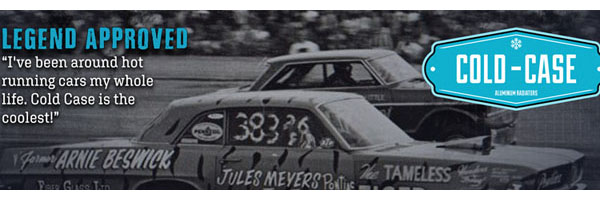Quote:
Originally Posted by RJB68GTO

Thanks, at this point I do not recall if we used a tall or short throw out bearing on the existing clutch it was what ever came with the kit. Which one would angle the end of the fork more towards the front, I'm thinking the tall one, but at this point what the hell do I know.  |
First, count to 3 and take a deep breath! LOL Sometimes being frustrated makes the obvious unobvious. Now, sorry for the long story, but.........
The pressure plate, diaphragm types, can be either a flat or raised finger design. The clutch fork also comes into play as it can have a different pivot point and angle.
Do you know for a fact that you have Pontiac replacement parts that are correct for your year/build? I experienced the purchase of a "generic" aftermarket clutch fork said to fit my '68 Lemans. I was thinking that while I am installing all new clutch linkage and clutch set-up, might as well spring for the fork. Mine was ok, but while I am replacing everything..........
The aftermarket fork looked OK eyeing it up, but it was not Pontiac. I decided to also install an adjustable pivot ball in the bellhousing to replace the original. The aftermarket pivot ball had a broader "head" that the dimple on the clutch fork pivots on. Problem #1 that I did not see. Problem #2 was that the aftermarket clutch fork had a larger and deeper spacing where it slips over the throw-out bearing. Didn't think of it much at the time. Problem #3 was that the throw-out bearing was too short for the McLeod clutch set-up kit I had received (been told it was for a Chevy application?) and of course this was not learned until I fired up the car and went to put it into gear. Knew what it was right away from the same issue in my youth - so had to pull everything apart to install the correct length throw-out bearing.
Ok, new bearing in and now it'll go into gear no problem and the car drives. BUT, Problem #1 and Problem #2 rear up its ugly head. The "generic" clutch fork with its larger than stock deeper spacing, slips off the wider pivot head of the pivot ball on a nice hard fast shift. I go to push the clutch in for the next gear and no go. Pedal goes down and it is not enough to shift gears. Bad sound coming from the clutch set-up as well. I managed to limp home.
Pull out the trans and what I found was that the generic clutch fork had slipped off the pivot ball, and deeper over the throw-out bearing collar to the point the 2 contact arms that contact the throw-out bearing when you push in the clutch pedal went past the bearing and seated the fork deeper into that oversized opening. When it did that and I pushed in the clutch, the clutch fork pivoted not on the 2 contact arms, but the thicker arms that go around the throw-out bearing collar and busted off a big section of the throw-out collar. That section in turn went sailing into the pressure plate at speed and literally took out a damper spring in the clutch disc.
Went and located an original used 1968 clutch fork because I had tossed the original one out (heck, I had a new replacement so why hang onto junk, right?) and then shaped the pivot ball head on the adjustable pivot ball to fit correctly in the '68 clutch fork pocket. Noted that the factory fork did not have the extra large & deep spacing as did the generic fork which would not allow it to override the throw-out bearing collar as the generic fork had - very tight fit as it should have been. Had to anti-up for a new clutch set-up..............only to learn later that there are 2 different heads on the flywheel-to-crank attachment bolts.
Of course I got the Grade 8 flywheel bolts advertised to fit the Hays flywheel for Pontiacs only to learn I needed the thinner head on the bolts versus the thicker heads. Always had a strange whine when slipping the clutch out and I attributed it to the carbon fiber clutch disc as a normal type sound because I never ran a carbon fiber disc before. When I disassembled the engine for rebuild version 2.0, it was obvious that the thicker heads on the flywheel bolts were hitting/polishing the clutch disc springs - and that was where the strange whining sound was coming from. Those little springs were nice and shiny on the high side. LOL
Lesson learned - aftermarket advertised parts said to work or to be for your Pontiac may not be for your Pontiac because many of the sellers are just that, sellers and not Pontiac people, let alone actually work on cars. So it is up to you to check and confirm everything - which can be harder when the previous owner has installed non-Pontiac or generic "said to fit" parts and you don't know the difference between factory and aftermarket because you did not start with factory parts that could be used for comparison.
So start from the beginning and go throw the entire set-up from clutch pedal to linkages to clutch fork to the clutch set-up.
I'll spare you about the oil pump problem that took out my previous 400CI build and caused me to get wrapped up in my long term resto-mod 2.0 car rebuild - which I hope to get done before I die. LOL








 Linear Mode
Linear Mode



